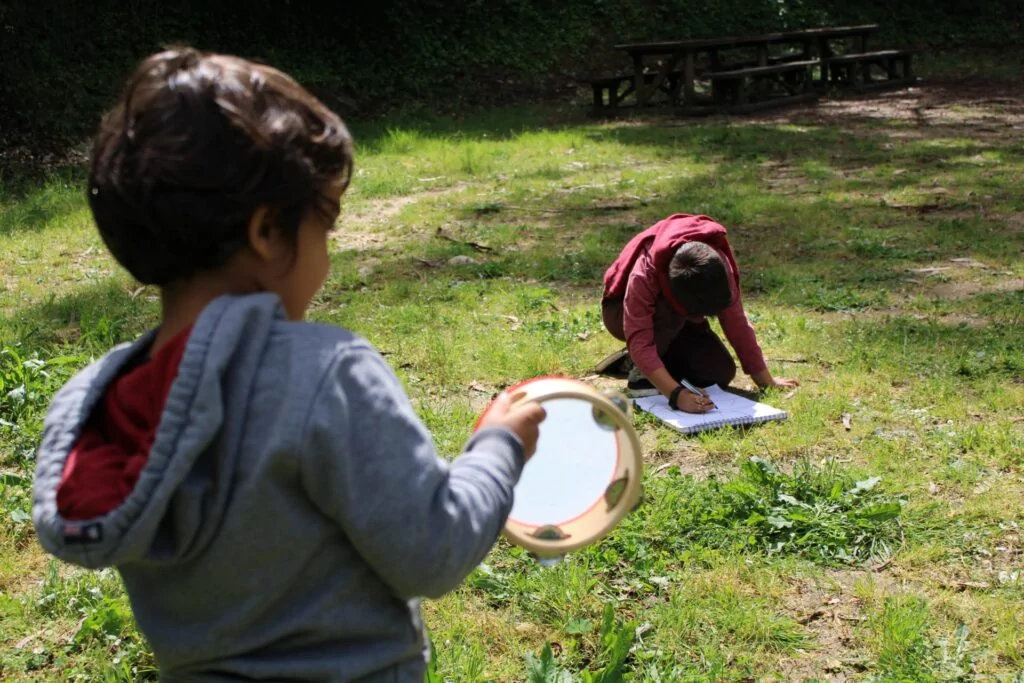Understanding the places we inhabit has much to do with what we capture through our senses. Sound, for example, is something we don’t see, but sometimes we feel it fills a space. What will it be like to understand what space this is and how it changes?
With this Play Invitation, children will be able to dwell on the idea of something that occupies space but still, we don’t see it, developing their listening skills and spatial awareness while exploring the concepts of acoustics, intensity, and direction.
What Could Lead Us to This Play Invitation
- Children have been exploring sounds in diverse spaces of their school;
- Children are curious about discovering how to produce different sounds using objects;
- Children are excited about speaking and singing loud, calling out loud to their friends.
Materials Needed
• Paper
• Oil pastels or markers
• Musical instruments (or something that produces sounds)
Setting up this Play Invitation
- Place some paper sheets on your classroom floor.
- Place a container with oil pastels or markers nearby.
Tip: If doing this outside, attach the paper sheets to a clipboard, or make sure the sheets have a hard surface underneath.
How to Create the Collage
- Invite a small group of children (2-4) to choose a musical instrument and choose a different spot in your classroom.
- Invite another child to be on the floor next to the paper and the markers, blindfolded.
- Ask the children holding the musical instruments to make a sound.
- The blindfolded child will draw the sound trajectory starting from the dot in the center of the sheet.

With Younger Children: Offer clear paper, with no dots, and let them draw the trajectory of the sound as they are sensing it.
How to Nurture the Natural Unfolding of the Child’s Identity During This Play Invitation
- Children have the right to a whole perceptual development. The ability to perceive and interpret senses is something we should learn, as our survival depends upon it. This learning occurs based on the knowledge we gather through our experiences. That is one of the reasons children need constant opportunities to build on their tactile, visual, olfactory, auditory, and kinesthetic skills. Only then will they be able to organize and find meaning in their everyday surroundings and encounters.
The Academic Learning Opportunities
- MATH: Create a graphical representation of an occurrence, and define its shape and direction.
- PHYSICAL: Build on their visual-spatial relationships.
- SCIENCE: Develop listening skills to create theories about sound propagation and direction, and identify and classify sounds.
Extensions
- Invite each child to dance using their drawings as if it was a choreography script. What body movements are those lines asking you to do?
Book Recommendation

A fascinating book that takes us on experiencing sound in a new and visual way.


